Allison Bruning's Blog, page 29
March 7, 2014
Spread the news. #Spring has sprung!

There is just no one word to express how I feel today. Let's face it. It's been a brutal winter for Indianapolis. We've had the worst winter since the Blizzard of '78. Some locals have even claimed that this winter is worse than that one. It has been so cold that all our bodies have acclimated to the harsh temperatures. It was 30 degrees the other day and everyone, including my husband and I, were walking around in a light coat, T-shirt and blue jeans. Thirty degrees just doesn't feel that cold when you compare it to the below 0 temperatures we've had up here. Today my curtains and blinds are open. The sun is shining and it's going to be a high of 55. I actually had to turn on the air yesterday afternoon cause it was 76 in the house and I was burning up. My small blessing this week isn't that small for this Midwestern girl. So I'm just going to shout it out.

Published on March 07, 2014 10:24
March 6, 2014
Mesolithic #Ireland: Irish Hunter-Gatherers #archeology #Irish #burial #life
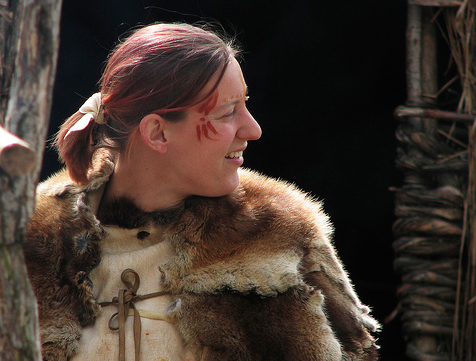 Hunter-Gatherer Girl
Hunter-Gatherer GirlBy: Hans Splinter
http://bit.ly/1lBrYOS
Mesolithic Ireland:Irish Hunter Gatherers
Welcome back to Mesolithic Ireland. That last time we visited this period of Irish history I introduced you the Irish legends about the first Irish men and women. This week we are going to take a look at the reality of Ireland's past.
The first people to arrive to Ireland came to the island via boats from Scotland and England 8,000 years ago. Although there were people all over Europe and England by this time, Ireland had remained untouched until these groups of hunter-gatherers came to the island. The Irish Mesolithic period spans from 8,000 to 4,000 BC.
Hunter - Gatherers
The Mesolithic Era is also know as the Middle Stone Age periods. Humans in Ireland lived as hunter-gatherers because they depended upon gathering plants and hunting for the food source. Although farming was discovered by Middle Eastern cultures around 12,000 BC it wouldn't reach Ireland until 4000 BC.
Every human society has a kinship system that defines how someone is related to another person. Kinship is important to understand when you trying to understand how any given society operates. It is so ingrained in any given culture that is second nature to anyone who is born in that given culture but can be overwhelming to anyone who is new to that group. Kinship was around in human groups from the very beginnings of our societies. It played an important rule in hunter-gatherer societies.
Hunter-gatherer societies were clan based with anywhere between 50-100 adults. The clan controlled the territory in which its members hunted, lived and gathered plants. Every member of the clan believed they had descended from a common ancestor, thus making kinship critically important. Members of the clan shared a common cultural identity which offered a sense of belonging to anyone born into that society. The clan set cultural taboos that identified who you could marry, who your friends were and who your enemies were. Members of the clan were forbidden to marry outside their clan. Clan leadership did not have a king or chief because everyone lived in smaller groups. These smaller groups were family based. The family group was comprised of anywhere between 10-12 adults plus children. There were some members of the clan that were honored for their wisdom and were credited with having special magical powers.
The River Shannon
 The River Shannon
The River ShannonPublic DomainThe River Shannon is the largest river in Ireland and is closely related to much of Ireland's cultural, social, military, political and economical history. According to Wikipedia, Irish legend claims "the river was named after a woman named Sionann, the granddaughter of Lir. She went to Connla's Well to find wisdom, despite being warned not to approach it. In some sources she, like Fionn mac Cumhaill, caught and ate the Salmon of Wisdom who swam there, becoming the wisest being on Earth. However, the well then burst forth, drowning Sionann and carrying her out to sea. A similar tale is told of Boann and the River Boyne. It is believed that Sionann was the goddess of the river. Patricia Monaghan notes that "The drowning of a goddess in a river is common in Irish mythology and typically represents the dissolving of her divine power into the water, which then gives life to the land." Irish lore claims the River Shannon is home to the monster named Cata. According to the Book of Lismore, Cata was defeated by Senán mac Geirrcinn, the patron saint of County Clare at Inis Cathaigh.
Ireland's Oldest Cemetery
The River Shannon was one of the rivers in which Mesolithic hunter-gatherer groups settled and on it's bank contains Ireland's earliest cemetery. The Mesolithic cemetery was discovered in 2001 when Sarah McCutcheon dug a test-trenched for the Castleconnell Rising Main. The trench revealed several archeological features. Local authorities called in Aegis Archaeology to investigate the site. The excavation site was divided into four quadrants. You can read the entire report at excavations.ie.
Archeologists located two burial pits that each contained the cremated remains of and adult. The first burial pit dating to 7530-7320 BC and is believed to contain a male. His body had been carefully placed in a pit around a wooden post in a crescent formation. His bones showed evidence that whoever had conducted the rite was very familiar with cremations. A large stone ax found next to body showed evidence it had been placed next to the body in the funeral pyre. There was several pieces of flint and chert shards with the remains.
The second burial pit was located 100m away from the first pit and is dated to 7090-7030 BC. This date makes this burial slightly later than the first one. The burial pit was 2.30m long by 1.50m wide by 0.65m. There was no evidence of a wooden pole in the pit. There were small cremated remains of an adult but not enough to determine the gender. Archeologists found several pieces of worked and unworked flint and chert and burnt fish bones. Some scientist believe the fish bones could have been an offering place on the funeral pyre with the body or the last meal the person ate. This second burial differs from this first in that the entire body wasn't cremated. It wasn't an uncommon practice in Irish prehistory culture to have a "Token Burial." The missing remains could have been kept by the living as relics or deposited on sacred ground elsewhere.
The third and final burial pit contained the least amount of cremated bones and could not be determined if they were human or not. The pit was surrounded by a charcoal rich hill and measured 1.30m long by 0.70m wide by 0.50m deep. It was dated 6610-6370 BC, making it the latest of all the burial pits.
The burial pits along the River Shannon are not only important by date but by meaning as well. Ireland's oldest cemetery taught us that the Mesolithic Irish had a sophisticated burial practices and belief system.
Published on March 06, 2014 11:49
March 5, 2014
IWSG: Get Ready for #CampNaNoWriMo
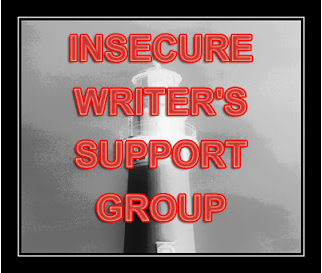 Spring! After the long winter we've had this year I'm SOOOOO ready for Spring. Dedicated writers everywhere are busy getting ready for the month long tort....uhm I mean celebration. Yeah, celebration, known as Camp NaNoWriMo. This year Camp NaNoWriMo occurs in April and June. I plan to attend both camp sessions. I have a goal of releasing four novels this year. How in the world can I do that? My little secret is Camp NaNoWriMo and NaNoWriMo in November. In fact, two of my published novels are NaNoWriMo projects.
Spring! After the long winter we've had this year I'm SOOOOO ready for Spring. Dedicated writers everywhere are busy getting ready for the month long tort....uhm I mean celebration. Yeah, celebration, known as Camp NaNoWriMo. This year Camp NaNoWriMo occurs in April and June. I plan to attend both camp sessions. I have a goal of releasing four novels this year. How in the world can I do that? My little secret is Camp NaNoWriMo and NaNoWriMo in November. In fact, two of my published novels are NaNoWriMo projects.My April project will be a historical fiction stand alone. You're shocked. I can hear it now. "Allison's writing a stand alone?" I know. I know. You're so use of my series that the thought I'm writing a stand alone is weird to you. The stand alone I'm working on developed out of a short story I wrote for a contest and then I converted that story into a screenplay. I'm now converting the screenplay to novel format. Field of Grace is based on a true event that happened to my great grandfather. Some of the characters are based on my relatives. I'm so excited to write this project.
In June I plan to work on the sequel to Calico titled, Lies and Deceit. Lies and Deceit will once again take us into the world of the Shawnee Nation as Calico and Little Owl have to face the family secrets that threaten to destroy their village.
What in the world is Camp NaNoWriMo?
 Camp NaNoWriMo is summer sequel to the National Novel Writing Month. The international event is
Camp NaNoWriMo is summer sequel to the National Novel Writing Month. The international event isthe perfect vacation that challenges writers to a complete novel in one month. I wont' lie to you. It can be torturous. But it's very fulfilling, too. So whose up for the challenge to write 50,000 words in one month?
Since it's conception by Chris Baty and twenty-one of his friends in 1999, the movement has grown to include thousands of participants worldwide. Many of the novels written in NaNoWriMo have been published by well known and respected publishing houses as well as small presses. There is a large list of published NaNo novels on the NaNoWriMo website that you can find here.
So how does NaNoWriMo work?
It's simple. Here are the rules.
1) Register and use the Camp NaNoWriMo site everyday. https://campnanowrimo.org/sign_in
2)You can plan for your writing adventure by creating outlines and character sketches.
3) You cannot start writing before midnight April 1st. No cheating.
4) In order to win the competition you must have written and uploaded your 50,000 words by 11:59pm of April 30th.
5) No editing. Just keep writing. You can polish your masterpiece after Camp NaNoWriMo.
6) HAVE FUN!!!
Sounds simple enough, right? Are you ready to take the plunge?
 By: hjconti @ http://www.flickr.com/photos/hjconti/...
By: hjconti @ http://www.flickr.com/photos/hjconti/...Here are some tips and tricks to survive Camp NaNoWriMo.
Connect With Other Camp NaNo Writers
If your region doesn't have a kick-off party or write ins you can still gain friendship and support from other writers via Facebook. There are several Camp NaNo groups online. I have one here you are more than welcome to join. https://www.facebook.com/groups/MSHNANO/
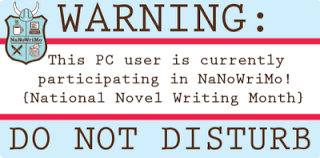 By: NaNoWriMo sticker by pottered4dwzei
Plan A Time To Write And Stick To It
By: NaNoWriMo sticker by pottered4dwzei
Plan A Time To Write And Stick To It
Writing a novel takes dedication and commitment. Set a block of time in your daily schedule for writing and commit to it. It doesn't have to be done all at once. Just an hour or two a day. I set aside a couple of hours when I get up in the morning to do my NaNo writing. Once you commit to a time tell everyone you know not to disturb you during this time period. You're a novelist at work. No distractions - no social media sites, tv, phone calls, text, you get the picture.
Plan Ahead!
Write your outline and character sketches before you start writing.
Use A Camp NaNoWri Calendar
These are wonderful! In order to meet your goal of 50,000 words you need to write at least 1,667 words a day. Camp NaNoWriMo calendars are easy to find just by conducting a Google Search. I downloaded one and have it set as my wallpaper. Everyday on the calendar it lists the total or words your novel should have by the end of that day. Sometimes the calendars include motivational messages and dares.
Camp NaNoWriMo also charts your progress as you progress through the month. Make certain to upload your word count at the end of each day and keep track of your progress on paper as well.
When Your Stuck Use A Dare And/Or A Sprint
A dare is any idea someone else has submitted for you to include in your novel. These can be regional, national or international dares. Some are so outlandishly funny you want to include them in your book.
A sprint is when you and/or other people write consecutively for 10, 15, 20 or 30 minutes. At the end of the allotted time you count your words and announce your total to your friends who had participated with you.
HAVE FUN!!!!
Published on March 05, 2014 04:47
March 4, 2014
ExpressYourself: A Hero's Mark @JungleJackHanna @RealNichelle @Marina_Sirtis @JimHensonLegacy
Express Yourself: Autographs From My Heroes

Welcome back the weekly Express Yourself Blog Tour. This week I was asked to write about the autographs that I have collected. I actually have three but use to have four autographs that meant more than the world to me.
1) Jack HannaThe very first autograph that I ever collected was from Jack Hanna at the Columbus Zoo. Jack Hanna
 Public Domainwas the director of the Columbus Zoo from 1978 to 1993. I'm from Marion, Ohio which is only 35 miles away. I spent much of my childhood at the large zoo. I have always had a passion for wildlife conservation and preservation. I love all animals and find them fascinating. In fact, I wanted to be a zookeeper when I was in Middle School. When career day came around and we had to spend a day in our chosen career then write a report about it I couldn't get into the Columbus Zoo for my project so I settled to spend the day in a pet store. Jack Hanna started appearing on shows such as Good Morning America and Late Night with David Letterman in 1983. He quickly became a local celebrity. He not only exposed the Columbus Zoo nationally with each public appearance but he also made drastic changes to the way the zoo operated that made the Columbus Zoo one of the largest and best zoo's in America. I became so accustomed to the changes he made that today I still compare any zoo that I visit with my childhood zoo. The Columbus Zoo takes an entire day to visit! One day while we were visiting the zoo the zoo announced that Jack Hanna was signing autographs close to where my mom and I were located. I was so excited. My mom and I followed the directions and I couldn't believe my eyes when we stood before my hero, Jack Hanna. I told him about my love for animals and how much I wanted to work with them when I grew up. He gave me a photograph of him and signed it.
Public Domainwas the director of the Columbus Zoo from 1978 to 1993. I'm from Marion, Ohio which is only 35 miles away. I spent much of my childhood at the large zoo. I have always had a passion for wildlife conservation and preservation. I love all animals and find them fascinating. In fact, I wanted to be a zookeeper when I was in Middle School. When career day came around and we had to spend a day in our chosen career then write a report about it I couldn't get into the Columbus Zoo for my project so I settled to spend the day in a pet store. Jack Hanna started appearing on shows such as Good Morning America and Late Night with David Letterman in 1983. He quickly became a local celebrity. He not only exposed the Columbus Zoo nationally with each public appearance but he also made drastic changes to the way the zoo operated that made the Columbus Zoo one of the largest and best zoo's in America. I became so accustomed to the changes he made that today I still compare any zoo that I visit with my childhood zoo. The Columbus Zoo takes an entire day to visit! One day while we were visiting the zoo the zoo announced that Jack Hanna was signing autographs close to where my mom and I were located. I was so excited. My mom and I followed the directions and I couldn't believe my eyes when we stood before my hero, Jack Hanna. I told him about my love for animals and how much I wanted to work with them when I grew up. He gave me a photograph of him and signed it.2) Nichelle Nichols
 Public Domain
Public DomainI have always been a Trekkie. I still remember the first time my mom introduced me to the Star Trek series. I was in 2nd grade and we had just moved to Mt. Gilead, Ohio. There was a new station on the cable that only showed Sci-Fi shows. My mom turned it on and introduced me to Star Trek. I immediately fell in love with the show. We would watch Star Trek, Battlestar Galactica and then Buck Rogers. I loved them all but my favorite was always Star Trek. My mom took me to my first Star Trek Convention when I was a few years older. My favorite part was sitting in the conference room listening to Nichelle Nichols answer questions about her experience on Start Trek. I couldn't believe she would answer just any one's questions. After the show we stood in a long long waiting for her to sign her autograph. The line was so long and I grew tired of waiting. So I snuck my way to the front of the line and struck up a conversation with the actress. We talked for an hour before mom eventually worked her way to the front and Nichelle signed two pictures, one for me and one for my mom. I'll never forget that conversation. I don't remember what we talked about but I remember Nichelle took the time out to talk to a young girl who had always admired her. I walked away feeling like I had made a friend and because of that Uhura became my favorite character on Star Trek.
3) Marina SirtisI had seen all of the movies, read the books, comics and watched the old series by the time Star Trek:
 The Next Generation premiered on television in 1987. I was so glad there was a new Star Trek for my generation to watch. I was intrigued by all of the characters especially Tasha Yar, Worf and Deanna Troi. The thing that interested me the most about Worf was that he was a Klingon serving on a Federation ship. What was up with that? Counselor Deanna Troi interested me the most because she was an empath and she was a counselor. I was interested in anything to do with psychology, sociology and anthropology. In 1989, my mom and I went to a Star Trek convention where Marina Sirtis. We had just watched the episode "Who Counsels The Counselor." My mom was a social worker and found some of the techniques used in the episode wanting. The line was really long and I tried to get close to the actress just as I had done with Marina but I couldn't get close enough. Once it was our turn to get our autographs my mom told Marina that she was a social worker. Marina asked what she thought of the new episode that aired the previous week. My mom told her what she found wrong with it and Marina said she would relay the message to the producers. She autographed our pictures and then we went on our way. After that I liked the character Counselor Troi even more.
The Next Generation premiered on television in 1987. I was so glad there was a new Star Trek for my generation to watch. I was intrigued by all of the characters especially Tasha Yar, Worf and Deanna Troi. The thing that interested me the most about Worf was that he was a Klingon serving on a Federation ship. What was up with that? Counselor Deanna Troi interested me the most because she was an empath and she was a counselor. I was interested in anything to do with psychology, sociology and anthropology. In 1989, my mom and I went to a Star Trek convention where Marina Sirtis. We had just watched the episode "Who Counsels The Counselor." My mom was a social worker and found some of the techniques used in the episode wanting. The line was really long and I tried to get close to the actress just as I had done with Marina but I couldn't get close enough. Once it was our turn to get our autographs my mom told Marina that she was a social worker. Marina asked what she thought of the new episode that aired the previous week. My mom told her what she found wrong with it and Marina said she would relay the message to the producers. She autographed our pictures and then we went on our way. After that I liked the character Counselor Troi even more.4) Jim Henson
The last autographed I collected happens to be a happen of chance I will never forget. My friend, Nikki, and I were part of a school group called Earth Shuttle the summer of 1990. The Earth Shuttle program was a week long educational field trip for a select group of students who excelled in science hosted by Disney and NASA. We had backstage access at Disney and met some of the members of the Mickey Mouse Club (none of the stars). Our group had an indepth tour of NASA and was there when the Hubble Space Station was supposed to launch the first time. Every place we stopped we had to take notes in our program booklet so that when we returned to school we would have notes we could use to construct our presentations. The last day we were there was a free day at Disney. Nikki and I had gone back to the studio to hang out with some of the Mickey Mouse Club but they were busy taping. We decided to go to the Indiana Jones presentation. We left the back lot and got lost on our way there. We ran down Main Street only to encounter some of the characters dancing around and singing. We didn't know they were being filmed. They stopped filming and we met a girl there that was the star of the film they were shooting. She was there because of the Make A Wish Foundation had sent her to Disney. We told her we were lost and she directed us to the Indiana Jones exhibit. We arrived just in time to get a seat in the front row. We watched the show for a few moments and then the show was stopped. The narrator told everyone on the loud speaker they had to interrupt the show because Jim Henson had made a special appearance requesting that he use the set to film his latest muppet film and wanted the audience in it. We all cheered. Nikki and I were sitting in the front row. Jim Henson showed up with the muppets and we watched him film this scene.
After the taping Jim Henson announced he would be giving autographs. The only thing I had on me at that time was director's board I had bought earlier. I handed it to Jim Henson to sign and he did on the top. Nicole and I were so excited. I kept the director's board for most of my life. It was one of my most prize possession and I tried to keep it safe with each move I made. Eventually, the director's board broke in a move and I lost Jim Henson's autograph. I may have lost his autograph but I will never forget the experience.
Published on March 04, 2014 18:03
Before Progressive Era America: The First Reform Movements #American #History #CivilWar
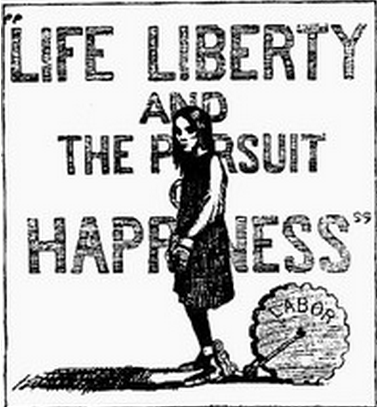 Progressive Era:
Progressive Era:
The First Reforms
Welcome back to my blog series on Reformation America. The last time we visited the Reformation Era we discussed the how eugenics played a large role in Progressive Era society. In the blog post before that I presented to you how the mentally ill were discriminated against and why it occurred during this period of American history. In that posting I also told you that Progressive Era was the second American attempt at societal reformations. The Progressive Era is also know as the Second Reform Movement. In order to understand the progressive movement we need to understand the the previous attempts at society reformations before, during and after the American Civil War.
The first reforms began soon after the United States won the War of 1812. After defeating the British for a second time there was a huge surge of nationalism and an independent spirit.
Territorial expansion had a large impact on the American political system. It was the first time interest groups had come to the forefront of many political discussions. These interest groups would reform the American political system into the modern day political structure we have today.
Antebellum Reforms
The Antebellum period in the United States lasted from 1820 to 1861. America continued to expand and settled out west yet back east there were many attempts to reform American society.
Specific attempts included:abolishing imprisonment for debt, temperancepacifismabolishing capital punishment, antislaveryamelioration of prison conditions (with prison's purpose reconceived as rehabilitation rather than punishment)the humane and just treatment of Native Americansthe human treatment of animals the establishment of public institutions for the care of the destitute, orphans, blind, and mentally illthe abolition of tobacco use, the establishment of public schoolsvegetarianismhomeopathic medicinehealth reformwoman's rights (including, at first, especially the establishment of a woman's right to own property apart from her husband and her right to sue for divorce)and the amelioration of labor conditions (including higher pay, the right to form unions, the right to strike, and the demand for limits on the number of work hours, and safe working conditions).The American Civil War ended all attempts of reformation yet the issue of slavery was still a hot topic of debate during the war.
The Civil War
The American Civil War lasted from April 12, 1861 – May 10, 1865 and is known as the Bloodiest War the United States has ever fought. Although it occurred in the beginning of the 19th century it has caused the most American lives in any war we have ever fought. The Civil War cost 1,030,000 casualties, including about 620,000 soldier deaths—two-thirds by disease, and 50,000 civilians. According to a September 2011 New York Times article, "Binghamton University historian J. David Hacker believes the number of soldier deaths was approximately 750,000, 20% higher than traditionally estimated, and possibly as high as 850,000." 56,000 soldiers died in prison camps while approximately 60,000 men lost a limb.
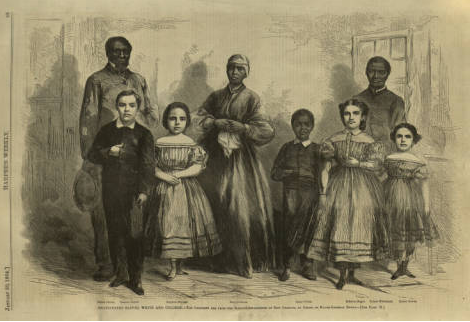 Public DomainThe Emancipation Proclamation, signed by President Abraham Lincoln on January 1, 1863, changed
Public DomainThe Emancipation Proclamation, signed by President Abraham Lincoln on January 1, 1863, changed everything for the Civil War. At the beginning of the war slavery had been only one issue that the states were fighting against. With Abraham Lincoln's signature the war now became about only one thing - slavery. Abraham Lincoln had reformed the United States by stripping away one of the south's precious commodities, slavery. It wasn't an unheard of move at the time. The United Kingdom had outlawed slavery with the Slavery Abolition Act of 1833. Before the war, many slaves had tried to escape from their masters via the Underground Railroad. The Underground Railroad was a secret, safe route from the south to Canada that was manned by abolitionists. Harriet Tubman, former slave and Union spy during the American Civil War, helped many former slaves navigate through the Underground Railroad. The Emancipation Proclamation was a major reform for African Americans but it was only a stepping stone towards complete freedom. After the proclamation was signed the United States government knew it would have to do something to ensure these newly freed slaves would have a place in our society. During the war, groups of Northern soldiers would experiment with localized reform efforts by granting the former slaves an education and teaching them how to manage their own farms.
After the Civil War, the United States had a new problem on their hands along with the integration of the former slaves into society. Entire cities, towns and personal property throughout the North and South lay in ruins with the Southern states receiving most of the damages. Most of the war was fought in the south. It was a common characteristic of the Union soldiers to burn any Southern farm and home they came across plus rob the locals. Life after the war had become an emotional, mental and physical ordeal for most people, especially for the Southern states.
Published on March 04, 2014 04:24
March 3, 2014
Celebrate #ReadAnEbookWeek with #AllisonBruning. #Ebooks for only $1
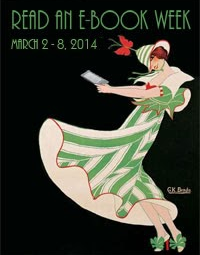 National Read An E-Book Week
National Read An E-Book WeekThis week is a very important week for thousands of readers throughout the world. E-books have revolutionalized the literary world since BiblioBytes launched their website in 1993 to sell E-books. Brick and mortar stores have a hard time selling paperback and hardback books because everyone seems to be reading E-Books nowadays. It's not uncommon for a avid reader to be reading a book on their iPad, Kindle, Computer or their phone. Libraries have started to loan out E-book readers and carry E-Books.
This week I've joined hundreds of authors who are selling their books at a huge discount on Smashwords.com for Read an E-Book Week. All of my books are on sale for $1.



Published on March 03, 2014 05:12
February 28, 2014
#Literary Blessing: 4 Star Review of Elsa. #history #fiction #Aspegers #Ohio
Literary Blessings

Welcome back. This week flew by so fast for me. As I look back to see where I have been and what small blessings were bestowed upon me I have a few to chose from but I will only post about one here.
This week I was delighted to receive another review on my book, Elsa. Elsa is the first book in the Secret Heritage series. It was released on January 17 of this year through Mountain Springs House. Here's the blurb and link:
All Elsa Garrett wants in life is to be Franklin's wife. He's asked her father for her hand and knows he has permission to ask her. Yet when and how would her boyfriend with Asperger's Syndrome ask the question? When Franklin has a diabetic seizure all hope seems lost once Elsa learns Franklin can no longer marry her due to an obscure law in Ohio relating to his seizure. With the help of Franklin's parents, Elsa has a plan. But will it work? Lost in a society that doesn't understand Franklin or why she would ever choose to be with him, Elsa comes face to face with death, destruction, and misfortune as she tries to clear her boyfriend's name. With each step towards progress Elsa falls two steps behind. One simple task shifts her entire life towards a direction she could have never imagined. Alone, pregnant, and without her Franklin, is despair all she has to look forward to in her new life, or will fate finally bring them together? http://amzn.to/GADXKE
And here's the review I received.
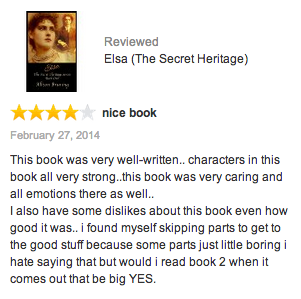
What was your blessing this week?
Published on February 28, 2014 04:09
February 27, 2014
Mesolithic #Ireland - The Legends: Fomorians, People of the Dann and Werewolves #Irish #history #celtic #culture
 The last time we visited upon Ireland she had been attached to Europe and was an inhospitable place to live. After the glaciers retreated the sea levels rose and Ireland became an island. Ireland drifted to her current position.
The last time we visited upon Ireland she had been attached to Europe and was an inhospitable place to live. After the glaciers retreated the sea levels rose and Ireland became an island. Ireland drifted to her current position.Mesolithic Ireland
The Mesolithic period in Ireland lasted from 8000 to 4500 B.C. and is commonly known as the Middle Stone Age. Ireland was the last place in Western Europe that humans occupied because it had not been previously accessible. The Irish landscape wasn't full of forest but had thick patches of hazel scrubs and lakes that would eventually become bogs.
The Fomorians
Irish legend claims the first inhabitants of the Emerald Isle were sea fearing, black haired, black skinned Fomorians. The Fomorians came to Ireland via the south and settled along the coastline. They often depicted as monsters or demons. The Lebor Gabála Érenn (aka: Book of Invasions), a collection of poems and prose that recalls every invasion in Irish history, describes the most ancient of Irish inhabitants as "crowds of abominable giants and monsters." The Fomorians were giants with different numbers of eyes and extremities. The descriptions of these monsters varied. Some had one arm, or one leg, or one eye or any other genetic abnormalities.
The most famous of the Fomorian leaders was Balor of the Evil Eye.
Balor of the Evil Eye
King Balor lived on Tory Island. He was the son of Buarainech and Cethlenn. King Balor had an eye
 Public Domainin the middle of his forehead and another one directly behind it on the back of his head. In Irish Mythology he is considered the god of death and destruction. He is also the King of the Fomorians. According to Irish mythology he was spying on some druids one day when some of their potion spilled into his eye. The aftereffect of the potion made his eye appear threatening anyone who happen to stare upon it. He was known as Balor of the Evil Eye after that incident. Balor once looked upon the small islands off the coast of Scotland. The islands disappeared after that. Neither giants nor gods could save themselves from the destruction that Balor's eye brought upon them. Balor kept his eye closed unless he was in battle. It took four attendants to hold down his eyelid.
Public Domainin the middle of his forehead and another one directly behind it on the back of his head. In Irish Mythology he is considered the god of death and destruction. He is also the King of the Fomorians. According to Irish mythology he was spying on some druids one day when some of their potion spilled into his eye. The aftereffect of the potion made his eye appear threatening anyone who happen to stare upon it. He was known as Balor of the Evil Eye after that incident. Balor once looked upon the small islands off the coast of Scotland. The islands disappeared after that. Neither giants nor gods could save themselves from the destruction that Balor's eye brought upon them. Balor kept his eye closed unless he was in battle. It took four attendants to hold down his eyelid.A druid prophecized that Balor would be killed by his own grandson. At the time he only had one child, a daughter named Ethnea Ni Bhaloir. Balor locked his daughter away in an impregnable tower with twelve matrons. She grew to become a very beautiful young woman who was eventually rescued by Cian, a Tuatha Dé. We'll talk more about the Tuatha Dé in another post. Balor was killed by their son, Lug mac Ethlend. You can read about Balor's defeat at Magic and Mythology.
The Fomorians and the Tuatha de Danann
The Tuatha de Danann were a tribe that settled in Northern Ireland close to the Fomorians. They were described in the Battles at Mag Tuired as:
"On northern islands of the earth there were tribes of the goddess Dana and there they comprehended knowledge, magic, knowledge of druids, charms and other secrets, while didn't surpass skillful people from all over the world. In four cities they comprehended knowledge, secret knowledge, devil craft - Faliase and Goriase, Muriase and Findiase. From Falias they brought Lia Fal that was then in Tara. He screamed under each king who could rule Ireland. From Gorias they brought a spear which Lug owned. Nothing could resist it or before the one in which hand it was.
From Findias they brought Nuada sword. It was necessary to take out it from a fighting sheath as anybody couldn't evade from it, and it was truly irresistible. From Murias they brought Dagd's copper. Never happened so that people leave it hungry …
… it was possible for tribes of the goddess Danu to make peace with Fomorians, and Balor, the grandson of Netab, gave His daughter Etne to Kean, to son of Dian Kekht. She gave birth to a wonderful child, and there was it Lugh. The Tribes of the Goddess Dana came on a set of the ships that force to take away Ireland from Fir Bolg. They burned the ships at Cork Belgatan which now is named as Konnemara Land, that not in their will was to recede to them. Ashes and a smoke descending from the ships, shrouded near lands and the sky. Since then people consider that the Tribes of the Goddess Danu came from smoky clouds".
According the Irish mythology the Fomorians were excellent farmers and breeders. They taught the Tuatha de Danann how to properly milk cows and how to till, sow and reap a harvest. They two tribes shared many resources and would breed with one another. The result of the mixed marriages created Faoladh otherwise known as werewolves.
The Faoladh
Unlike other European werewolves, Irish werewolves were not considered monsters. An Irish werewolf's predatory habits resembled those of wolves and occasionally raided local sheep or cattle herds. They never harmed humans. If a werewolf was attacked or surprised in wolf form they would run away and revert back to their human form. After they reverted to their human form the evidence of what they had done in wolf form would remain on their body. If they were injured as a wolf that injury would remain even if they were in human form.
The Irish werewolf was a creature of good that protected children, wounded humans, and anyone who was lost. They were often recruited by Irish kings during times of war.
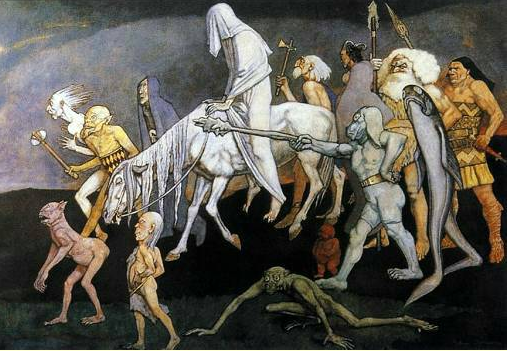 Public Domain
Spanish Invasion
Public Domain
Spanish Invasion
The Fomorians and the Tuatha de Danann both possessed magical abilities. The tribe of giants were said to be able to hear any sound carried by the wind. They could manipulate large bodies of water, clear away a fog and stop a storm. Between 1700-700 BC the Fomorians and Tuatha de Danann joined forces to fight an invasion of the Sons of Mile Spanish. Together they withstood three to five invasion attempts.
Extinction
According to legend, some three hundred years after the Great Flood a new people, known as the Partholonians, arrived in Ireland. The Fomorians once again defended their island against invaders but this time they would not live to tell their tales. Author John Huddlestone Wynne (1743-1788) stated in his 1784 book A Compleat History of Ireland, from the Earliest Accounts to the Present, about the extinction of the Fomorians, “And thus, say they, was Ireland first inhabited. — But unhappily a certain band, of the stock of Nimrod, whom they termed Fomorians, or giants, arriving amongst them, attempted to subdue the country; after many desperate engagements they were at last routed by the Partholanians, and far the greater part of them destroyed on one decisive day. But the dead carcasses of these Fofmorians being denied burial, it is said the stench occasioned a plague which presently swept off the victors and left the land uninhabited."
Giant's Causeway
 Giant's Causeway, Northern Ireland. Hexagonal basalts.
Giant's Causeway, Northern Ireland. Hexagonal basalts.WikipediaThe Fomorians have left their mark not only on Irish mythology but on the Irish landscape. The Giant's Causeway, located on the northern coast of Ireland, is said to have been constructed by the Fomorian Fionn mac Cumhaill. Fion was challenged by a Scottish giant by the name of Benandonner to create a causeway on the North Channel so the two could meet. After Fionn finished the causeway and realized Benandonner was bigger than he was, his wife, Oonagh, disguised him as a baby then tucked him away in a cradle. When Benandonner saw the size of the baby, he deduced Fionn must be a giant among giants. He ran back to Scotland, destroying the causeway behind him so Fionn could not follow.
Did the Fomorians Exist?
That is the question many scientists have asked over the centuries and has yet to be answered. Christian Irish scholars had once believed the Fomorians were either descended from Cain or from Shem. The theory that they are descended from Cain does not work because none of Cain's descendants survived the flood. As for the Fomorians being descended from Shem that wouldn't explain the history of the giant race in Ireland before the Great Flood.
In 1913, Professor Grafton Elliot Smith deduced the Fomorians were Iberians who had travelled to Ireland from North Africa. He proposed they either came from Liberia or Africa and were stone masons who were taken to Europe.
Published on February 27, 2014 08:22
February 26, 2014
Express Yourself: What does #StarTrek and #GameofThrones have in common? #writing #movies #bestseller
Express Yourself Blog Hop"Allison Bruning in Lights"

I'm a late comer to this weekly blog hop. I ran across this blog hop from one of the blogs I visited upon this morning from a blog I was reading on Bloglovin' this morning. I fell in love with the idea. As an author and screenwriter I want my readers to know more about me and I love getting to know other writers. I decided to sign up for the weekly blog hop.
This week I was asked "If you could be in any movie or TV show, as yourself, what would you chose, and what could you bring to the table?" Wow, that's a hard question to answer. I'm so use of creating the stories or working behind the scenes. When I was younger I use to dream that I was Commander Riker's long lost sister on Star Trek:TNG. I even wrote a short story in Middle School with the plot line that evolved in High School to a screenplay. I was obsessed. LOL! In fact, I'm glad I was because that storyline has become the building blocks for a Sci-Fi series I am working on called Mystique.
But which show would I be on now? I would have to answer Game of Thrones. I would be one of Daenerys' best friends and top advisors. What can I say? I'm a sucker for dragons. I would be a great advisor to the queen. I'm smart. I would be loyal to her and offer her wise advice. The road to the throne can be hard for any woman but there is great treasures to be gleaned in any journey that you struggle with.

Published on February 26, 2014 03:48
February 25, 2014
Progressive Era America: Eugenics
Progressive Era America: Eugenics
What Do You Mean I Can't Marry Him?
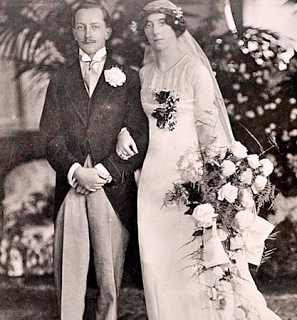
Elsa stared silently towards Juliette in shock. Can’t marry her? “Why would you forbid our union when you have welcomed me into your home and your family?”
Juliette answered, “If there were some other way I would not hesitate to support my son in his decision. I want you as my daughter. I already love you as if you were my own.”
“Then why take this from him?”
“It’s not me, Elsa. Ohio Law forbids any person who has epilepsy, is a drunkard, an imbecile, or insane from obtaining a marriage license or marrying.”
“But Franklin is none of those.”
“It doesn’t matter, Elsa. When he applies for the marriage license the county clerk will ask him, under oath, to testify he does not suffer from epilepsy, is not a drunkard, imbecile, or insane. He can’t lie to the courts about that.”
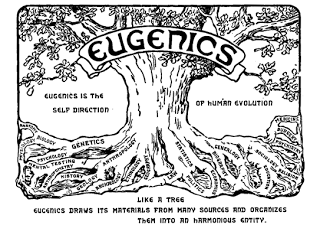
Today's topic of discussion is a touchy one and it might disturb some of my readers to know that before Nazi Germany practiced Eugenics it had long been established in the United States as the norm. What is Eugenics? Webster's Dictionary defines eugenics as "a science that deals with the improvement (as by control of human mating) of hereditary qualities of a race or breed." The term was first used in 1883 but the science had been in practiced long before that.
Progressive Era Americans did not view eugenics as a science but instead viewed it as a means to preserving the dominant group. The American Eugenics Movement originated with noted English scientist Sir Francis Galton. After reading Charles Darwin's theory of evolution Sir Galton concluded human could direct their own evolutionary development through selective breeding. In 1883, Sir Galton named his theory Eugenics. The Eugenic Movement quickly spread throughout the world.
Early followers of the Eugenic Movement believed Nordic, Germanic and Anglo-Saxon peoples were the superior race. They supported anti-miscegenation laws and strict immigration laws.
The Eugenics Movement was well established in the United States by the time Nazi Germany had
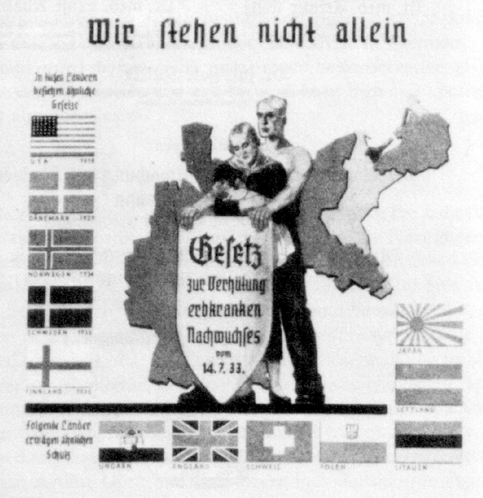 A Nazi propaganda poster showing the United Staes as their ally. established their own Eugenic laws. In fact, they were inspired by the American Eugenic Movement. During the 1930's California had created literature to promote eugenics and sterilization. They sent the material overseas to German medical doctors. The Rockfeller Foundation aided Germany in developing their eugenic programs, including the one Josef Mengele established before he was sent to the Auschwitz concentration camp.
A Nazi propaganda poster showing the United Staes as their ally. established their own Eugenic laws. In fact, they were inspired by the American Eugenic Movement. During the 1930's California had created literature to promote eugenics and sterilization. They sent the material overseas to German medical doctors. The Rockfeller Foundation aided Germany in developing their eugenic programs, including the one Josef Mengele established before he was sent to the Auschwitz concentration camp.
In 1934, California eugenics leader C. M. Goethe; after returning from German, where more than 5,000 people per month were being forcibly sterilized; bragged to a colleague "You will be interested to know that your work has played a powerful part in shaping the opinions of the group of intellectuals who are behind Hitler in this epoch-making program. Everywhere I sensed that their opinions have been tremendously stimulated by American thought . . . I want you, my dear friend, to carry this thought with you for the rest of your life, that you have really jolted into action a great government of 60 million people."
Anti-Miscegenation Laws
Anti-miscegenation laws are laws that criminalize interracial marriages. Alaska, Connecticut, Hawaii, Minnesota, New Hampshire, New Jersey, New York, Vermont and Wisconsin are the only states that have never had an anti-miscegenation law. The following eleven states repealed their anti-miscegenation laws before 1887: Illinois, Iowa, Kansas, Maine, Massachusetts, Michigan, New Mexico, Ohio, Pennsylvania, Rhode Island, and Washington. Anti - miscegenation laws were overturned in 1967 with Loving vs Virginia. You can learn more about Anti-miscegenation laws here. http://www.tn.gov/tsla/exhibits/blackhistory/pdfs/Miscegenation%20laws.pdf
Sterilization Laws
Another set of Eugenic laws that were common in the United States were the sterilization laws. A Sterilization law forces a certain population to become sterile for face imprisonment. In the United States these populations included the disabled,"immoral", and poor. The first serious attempt in the United States to pass a sterilization law was proposed by Gordon Lincecum, a famed Texas biologist and physician in 1849. He proposed a bill in Wisconsin that would forcibly sterilize the mentally ill and other less desirables. The bill never came to a vote. A little over fifty years later, Michigan passed a sterilization law but it was vetoed by the governor.
The first state sterilization law was passed in 1907 by Indiana. Although the law was passed it wasn't a new practice for Indiana. Indiana wardens had been practicing sterilization on male inmates since 1899. Hundreds of male prisoners had been given a vasectomy from 1899 to 1907. Indiana's 1907 sterilization law focused on forcibly sterilizing rapists, confirmed criminals, and the mentally handicapped housed within state facilities. In 1909, Governor Thomas R. Marshall, halted the law when he threatened to pull funding to any institution who enacted the law. The law was repealed in 1921 when the Indiana Supreme Court deemed it unconstitutional because of due process. Six years later, Indiana passed a new sterilization law. This time the law only targeted the mentally ill that were housed in the state facilities. Indiana's sterilization law was repealed in 1974. Approximately 2, 500 people were in state custody were sterilized.
Eugenic Laws
Laws throughout the United States were passed to enforce the eugenic beliefs. Although Ohio did pass a law forbidding epileptics, drunks and mentally handicapped people from marriage it never passed a sterilization law. The state had hoped by separating the feeble groups from the main population it would make Ohio families stronger.
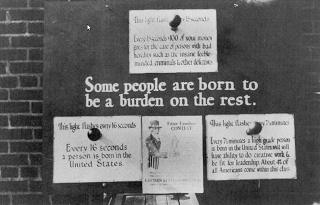 An American Eugenics poster from the early 20th centuryEugenics were widely accepted by Americans and the academic community. Population groups targeted by the Eugenic Laws included the mentally disabled; alcoholics; epileptics; people who were blind, deaf or disabled; poor people on welfare; criminals; women deemed promiscuous; and child of rape victims. Thirty-three states practiced eugenics. Most of their victims came from the mental institutions and prisons. At first the eugenics only targeted the mentally ill but as the years passed their list grew to include the other sub groups. It was not uncommon for a poor African American woman to give birth in the hospital only to be sterilized soon after. The doctor would tell her that her appendix needed to be removed and they would have to operate. She would consent to that only to wake up to find she could no longer bear children.
An American Eugenics poster from the early 20th centuryEugenics were widely accepted by Americans and the academic community. Population groups targeted by the Eugenic Laws included the mentally disabled; alcoholics; epileptics; people who were blind, deaf or disabled; poor people on welfare; criminals; women deemed promiscuous; and child of rape victims. Thirty-three states practiced eugenics. Most of their victims came from the mental institutions and prisons. At first the eugenics only targeted the mentally ill but as the years passed their list grew to include the other sub groups. It was not uncommon for a poor African American woman to give birth in the hospital only to be sterilized soon after. The doctor would tell her that her appendix needed to be removed and they would have to operate. She would consent to that only to wake up to find she could no longer bear children.
It is estimated 65,000 Americans were victims of the forced sterilization. ABC News reported in 2011, of the 33 states who had sterilization programs only seven have issued a public apology to the victims or acknowledgement of the program. The suggested compensation for each sterilization crime has been established to be between $20,000 to $50,000 per living victim. Most of these victims have died but their families still face the agony and grief that was done to their family member by their state government.
Eugenics are alive and well. There is a current movement in the United States to enact sterilization laws against pedophiles and rapists.
What Do You Mean I Can't Marry Him?

Elsa stared silently towards Juliette in shock. Can’t marry her? “Why would you forbid our union when you have welcomed me into your home and your family?”
Juliette answered, “If there were some other way I would not hesitate to support my son in his decision. I want you as my daughter. I already love you as if you were my own.”
“Then why take this from him?”
“It’s not me, Elsa. Ohio Law forbids any person who has epilepsy, is a drunkard, an imbecile, or insane from obtaining a marriage license or marrying.”
“But Franklin is none of those.”
“It doesn’t matter, Elsa. When he applies for the marriage license the county clerk will ask him, under oath, to testify he does not suffer from epilepsy, is not a drunkard, imbecile, or insane. He can’t lie to the courts about that.”

Today's topic of discussion is a touchy one and it might disturb some of my readers to know that before Nazi Germany practiced Eugenics it had long been established in the United States as the norm. What is Eugenics? Webster's Dictionary defines eugenics as "a science that deals with the improvement (as by control of human mating) of hereditary qualities of a race or breed." The term was first used in 1883 but the science had been in practiced long before that.
Progressive Era Americans did not view eugenics as a science but instead viewed it as a means to preserving the dominant group. The American Eugenics Movement originated with noted English scientist Sir Francis Galton. After reading Charles Darwin's theory of evolution Sir Galton concluded human could direct their own evolutionary development through selective breeding. In 1883, Sir Galton named his theory Eugenics. The Eugenic Movement quickly spread throughout the world.
Early followers of the Eugenic Movement believed Nordic, Germanic and Anglo-Saxon peoples were the superior race. They supported anti-miscegenation laws and strict immigration laws.
The Eugenics Movement was well established in the United States by the time Nazi Germany had
 A Nazi propaganda poster showing the United Staes as their ally. established their own Eugenic laws. In fact, they were inspired by the American Eugenic Movement. During the 1930's California had created literature to promote eugenics and sterilization. They sent the material overseas to German medical doctors. The Rockfeller Foundation aided Germany in developing their eugenic programs, including the one Josef Mengele established before he was sent to the Auschwitz concentration camp.
A Nazi propaganda poster showing the United Staes as their ally. established their own Eugenic laws. In fact, they were inspired by the American Eugenic Movement. During the 1930's California had created literature to promote eugenics and sterilization. They sent the material overseas to German medical doctors. The Rockfeller Foundation aided Germany in developing their eugenic programs, including the one Josef Mengele established before he was sent to the Auschwitz concentration camp. In 1934, California eugenics leader C. M. Goethe; after returning from German, where more than 5,000 people per month were being forcibly sterilized; bragged to a colleague "You will be interested to know that your work has played a powerful part in shaping the opinions of the group of intellectuals who are behind Hitler in this epoch-making program. Everywhere I sensed that their opinions have been tremendously stimulated by American thought . . . I want you, my dear friend, to carry this thought with you for the rest of your life, that you have really jolted into action a great government of 60 million people."
Anti-Miscegenation Laws
Anti-miscegenation laws are laws that criminalize interracial marriages. Alaska, Connecticut, Hawaii, Minnesota, New Hampshire, New Jersey, New York, Vermont and Wisconsin are the only states that have never had an anti-miscegenation law. The following eleven states repealed their anti-miscegenation laws before 1887: Illinois, Iowa, Kansas, Maine, Massachusetts, Michigan, New Mexico, Ohio, Pennsylvania, Rhode Island, and Washington. Anti - miscegenation laws were overturned in 1967 with Loving vs Virginia. You can learn more about Anti-miscegenation laws here. http://www.tn.gov/tsla/exhibits/blackhistory/pdfs/Miscegenation%20laws.pdf
Sterilization Laws
Another set of Eugenic laws that were common in the United States were the sterilization laws. A Sterilization law forces a certain population to become sterile for face imprisonment. In the United States these populations included the disabled,"immoral", and poor. The first serious attempt in the United States to pass a sterilization law was proposed by Gordon Lincecum, a famed Texas biologist and physician in 1849. He proposed a bill in Wisconsin that would forcibly sterilize the mentally ill and other less desirables. The bill never came to a vote. A little over fifty years later, Michigan passed a sterilization law but it was vetoed by the governor.
The first state sterilization law was passed in 1907 by Indiana. Although the law was passed it wasn't a new practice for Indiana. Indiana wardens had been practicing sterilization on male inmates since 1899. Hundreds of male prisoners had been given a vasectomy from 1899 to 1907. Indiana's 1907 sterilization law focused on forcibly sterilizing rapists, confirmed criminals, and the mentally handicapped housed within state facilities. In 1909, Governor Thomas R. Marshall, halted the law when he threatened to pull funding to any institution who enacted the law. The law was repealed in 1921 when the Indiana Supreme Court deemed it unconstitutional because of due process. Six years later, Indiana passed a new sterilization law. This time the law only targeted the mentally ill that were housed in the state facilities. Indiana's sterilization law was repealed in 1974. Approximately 2, 500 people were in state custody were sterilized.
Eugenic Laws
Laws throughout the United States were passed to enforce the eugenic beliefs. Although Ohio did pass a law forbidding epileptics, drunks and mentally handicapped people from marriage it never passed a sterilization law. The state had hoped by separating the feeble groups from the main population it would make Ohio families stronger.
 An American Eugenics poster from the early 20th centuryEugenics were widely accepted by Americans and the academic community. Population groups targeted by the Eugenic Laws included the mentally disabled; alcoholics; epileptics; people who were blind, deaf or disabled; poor people on welfare; criminals; women deemed promiscuous; and child of rape victims. Thirty-three states practiced eugenics. Most of their victims came from the mental institutions and prisons. At first the eugenics only targeted the mentally ill but as the years passed their list grew to include the other sub groups. It was not uncommon for a poor African American woman to give birth in the hospital only to be sterilized soon after. The doctor would tell her that her appendix needed to be removed and they would have to operate. She would consent to that only to wake up to find she could no longer bear children.
An American Eugenics poster from the early 20th centuryEugenics were widely accepted by Americans and the academic community. Population groups targeted by the Eugenic Laws included the mentally disabled; alcoholics; epileptics; people who were blind, deaf or disabled; poor people on welfare; criminals; women deemed promiscuous; and child of rape victims. Thirty-three states practiced eugenics. Most of their victims came from the mental institutions and prisons. At first the eugenics only targeted the mentally ill but as the years passed their list grew to include the other sub groups. It was not uncommon for a poor African American woman to give birth in the hospital only to be sterilized soon after. The doctor would tell her that her appendix needed to be removed and they would have to operate. She would consent to that only to wake up to find she could no longer bear children. It is estimated 65,000 Americans were victims of the forced sterilization. ABC News reported in 2011, of the 33 states who had sterilization programs only seven have issued a public apology to the victims or acknowledgement of the program. The suggested compensation for each sterilization crime has been established to be between $20,000 to $50,000 per living victim. Most of these victims have died but their families still face the agony and grief that was done to their family member by their state government.
Eugenics are alive and well. There is a current movement in the United States to enact sterilization laws against pedophiles and rapists.
Published on February 25, 2014 05:31



